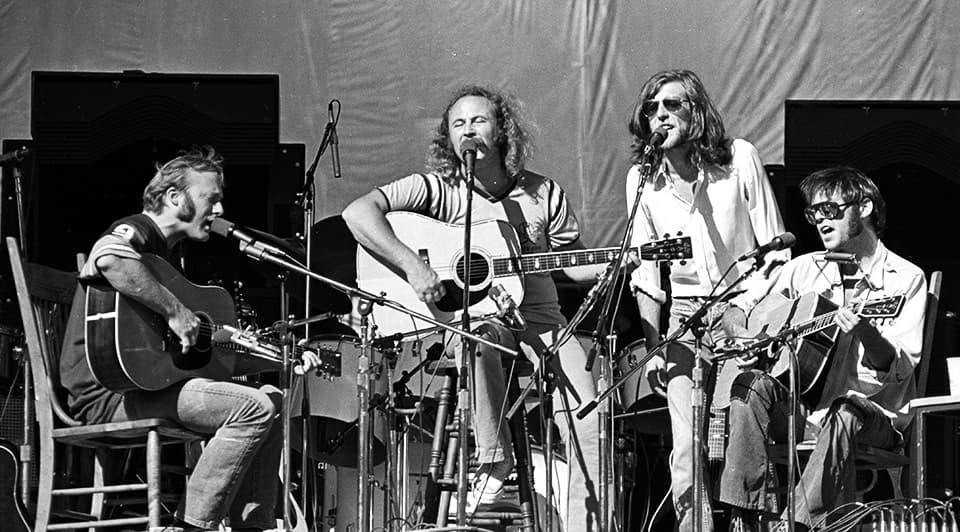
A Nation Gripped by Tragedy: “Ohio” Echoes the Anguish of Kent State
In the tumultuous spring of 1970, America was a nation deeply divided. The Vietnam War raged on, fueling protests and unrest across the country. It was against this backdrop of social and political upheaval that Crosby, Stills, Nash & Young released “Ohio”, a raw and immediate response to the tragic events at Kent State University. This wasn’t just a song; it was a visceral cry of pain, anger, and disbelief that resonated with a generation grappling with loss and disillusionment.
On May 4, 1970, during a protest against the U.S. invasion of Cambodia, the Ohio National Guard opened fire on unarmed students at Kent State, killing four and wounding nine. The images of the tragedy were seared into the nation’s collective consciousness, becoming a symbol of the deep divisions tearing America apart. Neil Young, deeply affected by the events, penned “Ohio” in response, capturing the raw emotion of the moment. The song was recorded just weeks after the shootings and rush-released as a single, foregoing the usual album cycle, to ensure its message reached the public as quickly as possible. This urgency speaks volumes about the impact the event had on the band.
“Ohio” is a stark, almost journalistic account of the events. Young’s lyrics, “Tin soldiers and Nixon coming, we’re finally on our own,” paint a grim picture of a nation where the government had turned against its own citizens. The line “Four dead in Ohio” is a haunting refrain, a stark reminder of the human cost of the conflict. The song doesn’t offer easy answers or political rhetoric; it simply bears witness, channeling the shock and grief that gripped the nation. The rawness of the recording, the almost desperate energy in the vocals, further amplifies this feeling of immediate, unfiltered emotion.
The song’s impact was immediate and profound. While it didn’t top the Billboard charts (peaking at number 14), its cultural significance far outweighed its commercial performance. It became an anthem for the anti-war movement, a rallying cry for those who felt betrayed by their government. It was played on radio stations across the country, sparking both outrage and solidarity. For many, especially those who lived through that era, hearing “Ohio” instantly evokes the feeling of unrest, anxiety, and profound sadness that permeated the early 1970s. It’s a sonic time capsule, transporting listeners back to a moment of deep national trauma.
The song’s enduring power lies in its ability to connect with listeners on a deeply emotional level. It’s not just a song about Kent State; it’s a song about loss, about the struggle for justice, and about the power of music to give voice to collective grief. Even today, decades later, “Ohio” remains a powerful reminder of the importance of protest, the fragility of peace, and the enduring impact of tragedy. It stands as a testament to Crosby, Stills, Nash & Young‘s courage to speak truth to power, reminding us that music can be a powerful force for change. It’s a song that continues to resonate, not just as a historical artifact, but as a timeless expression of human pain and resilience. The song was not part of any original studio album, but was later included on compilation albums such as “So Far”. This further emphasizes its importance as a standalone statement, a powerful message delivered directly to the heart of a nation in turmoil.